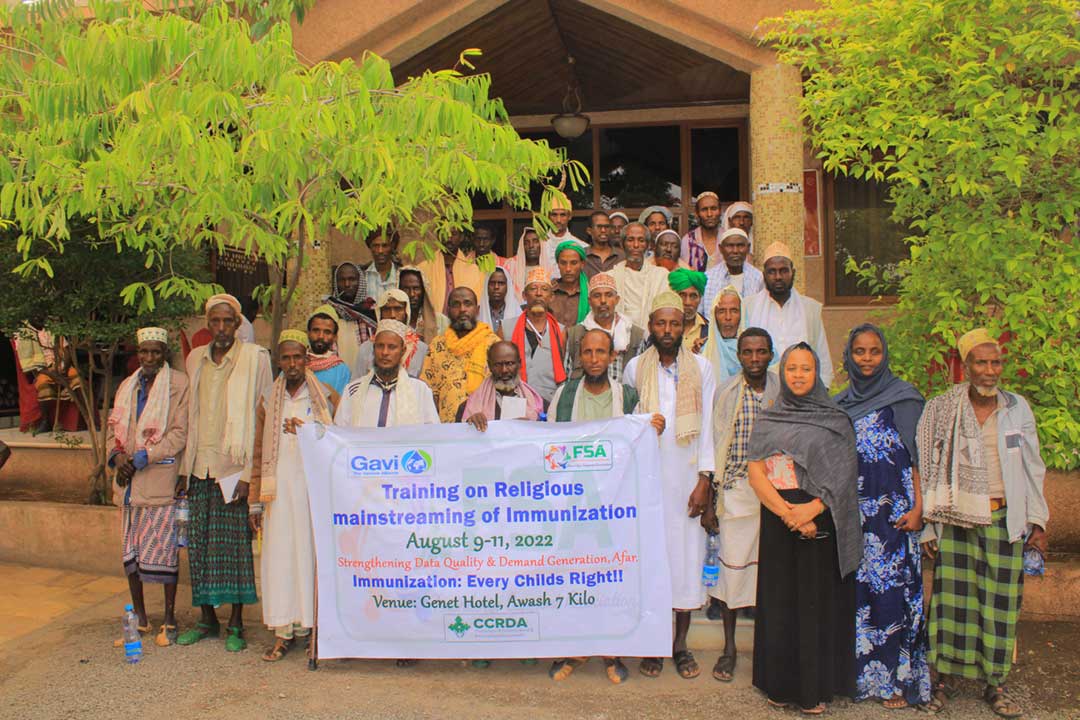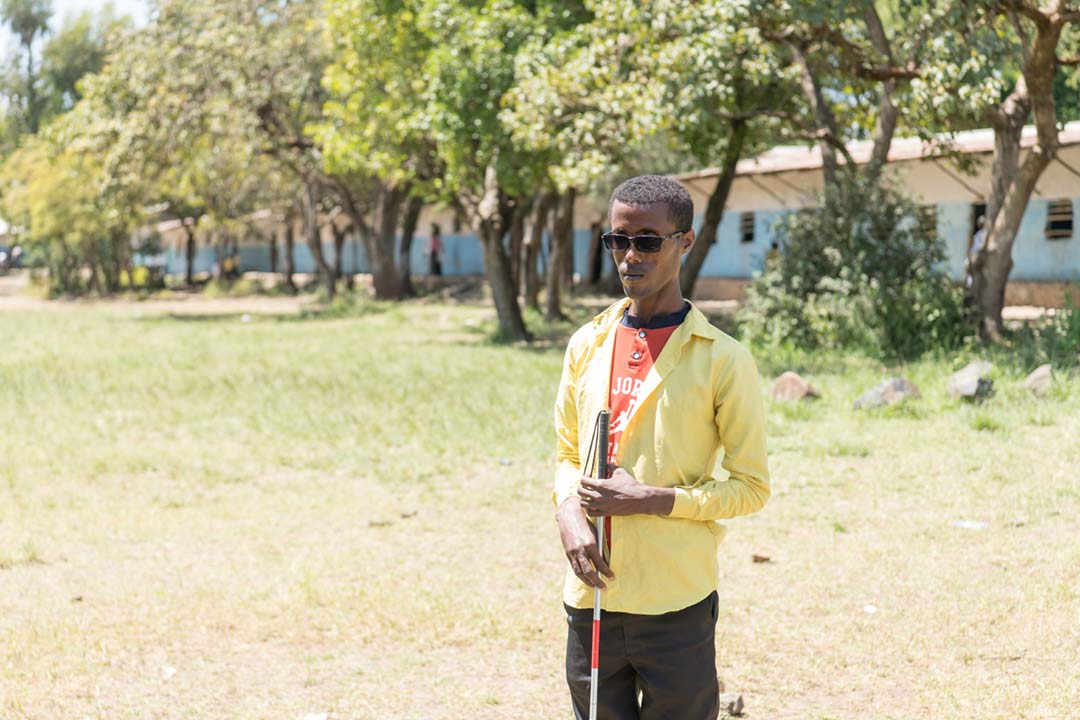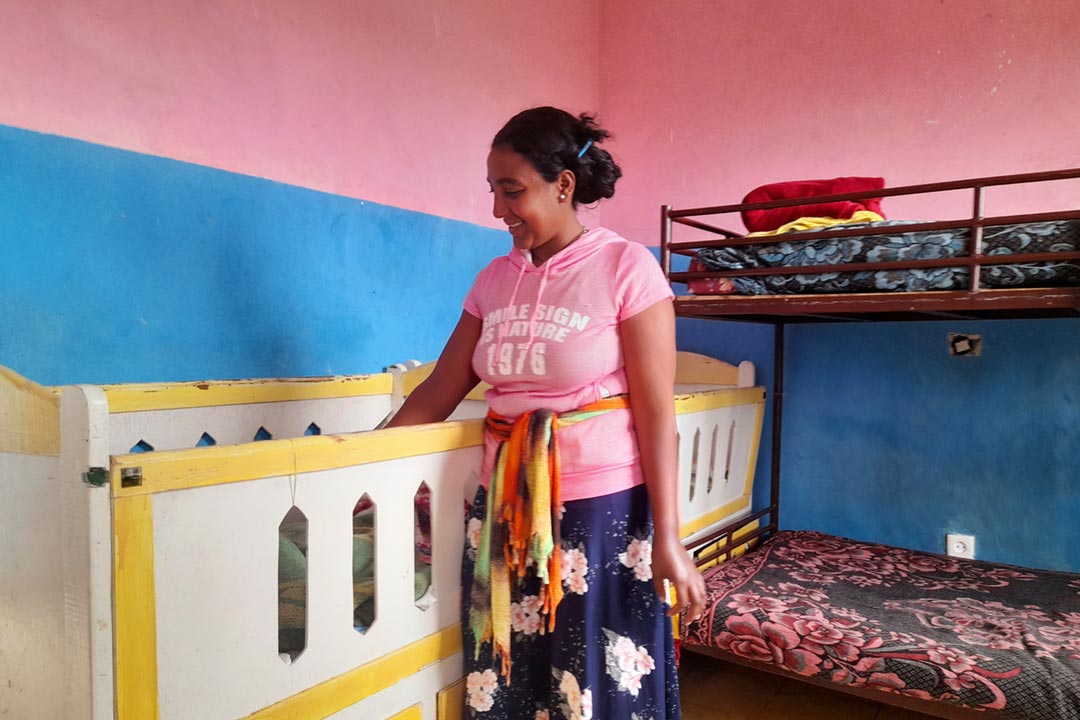Location, location, location: improvements in Ethiopia’s health facilities draw parents from far and wide
By improving the immunisation room in Injibara health centre, the quality of health services and the number of children being brought for routine immunisation has gone up.
- 17 August 2022
- 4 min read
- by Solomon Yimer
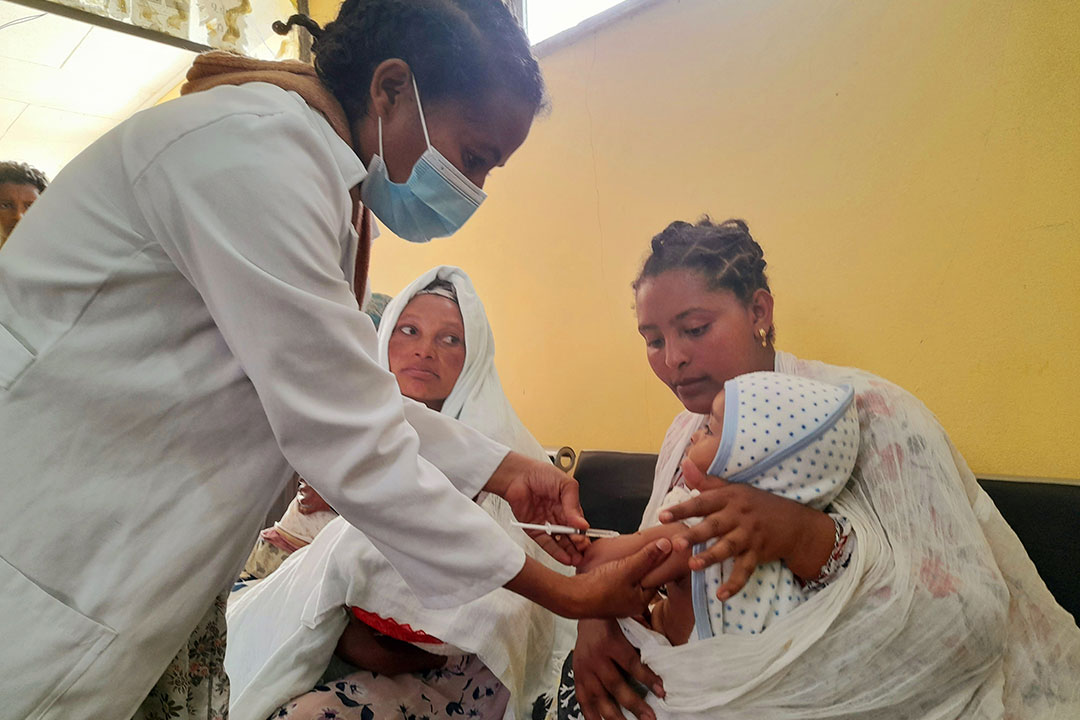
Last October, newly married mother Shashework Tilahun had her first experience of the Injibara health centre when she visited to have her first child vaccinated for the first time.
In the vaccination room, Tilahun says that she found the waiting area filled with lots of mothers who had also brought their children for vaccination. She had to wait for close to an hour, an experience she described as “horrible and uncomfortable”.
“We now see how the longer wait times and unhygienic and uncomfortable vaccination rooms caused some of the dropouts. We not only made the environment attractive but also regularly disinfect the room and keep the area clean to keep children safe from infections.”
“Besides the long waiting time, the room was too narrow and unhygienic. As a new mother it was not comfortable for me and my child,” she explains. “What I saw did not encourage me to bring my child back here for regular immunisations.”
The health centre is the only place that provides immunisation services in Injibara, a town of more than 100,000 inhabitants. As a result, Tilahun and other mothers had no choice but to visit the centre again.
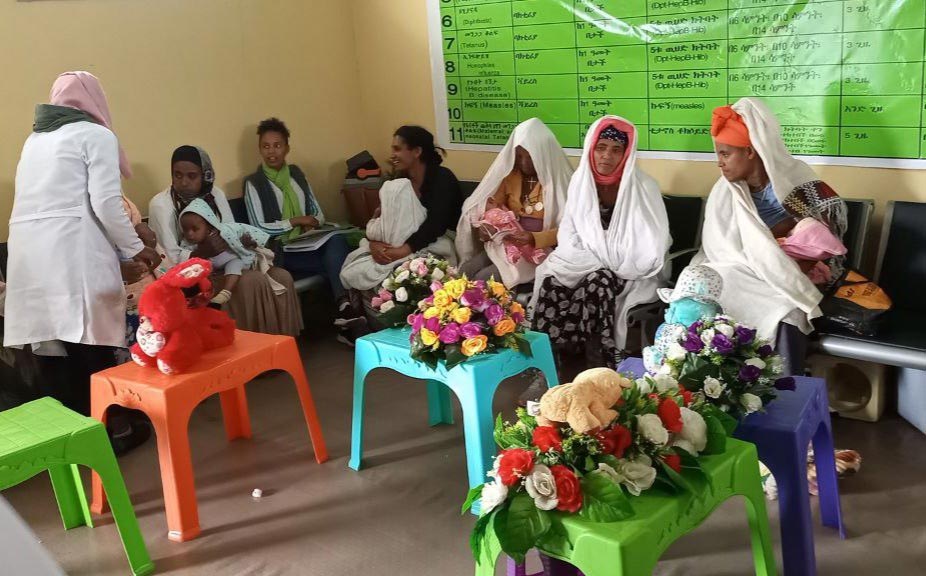
Credit: Solomon Yimer
However, when Tilahun visited the health centre on 27 July, she was very pleased with the improvements made to the immunisation room at the health centre. She found the narrow, messy vaccine room had been changed to a new and well-furnished vaccination facility.
In order to make the vaccination room more child-friendly and engaging, playing items, different coloured flowers and dolls have been placed in the room.
“I am happy to see the changes. The vaccination room is now wide and has enough space for the waiting mothers and health workers as well,” she says.
Compared to her previous visit, Tilahun also says that she noticed a more positive and friendly energy in the vaccination room.
“Everyone feels the same; most of the parents are happy about the changes. The health workers are also serving with great motivation and energy,“ she adds.
Other parents and caregivers, like Sintayehu, a child caregiver at an orphanage located near the health centre, shared the same sentiments.
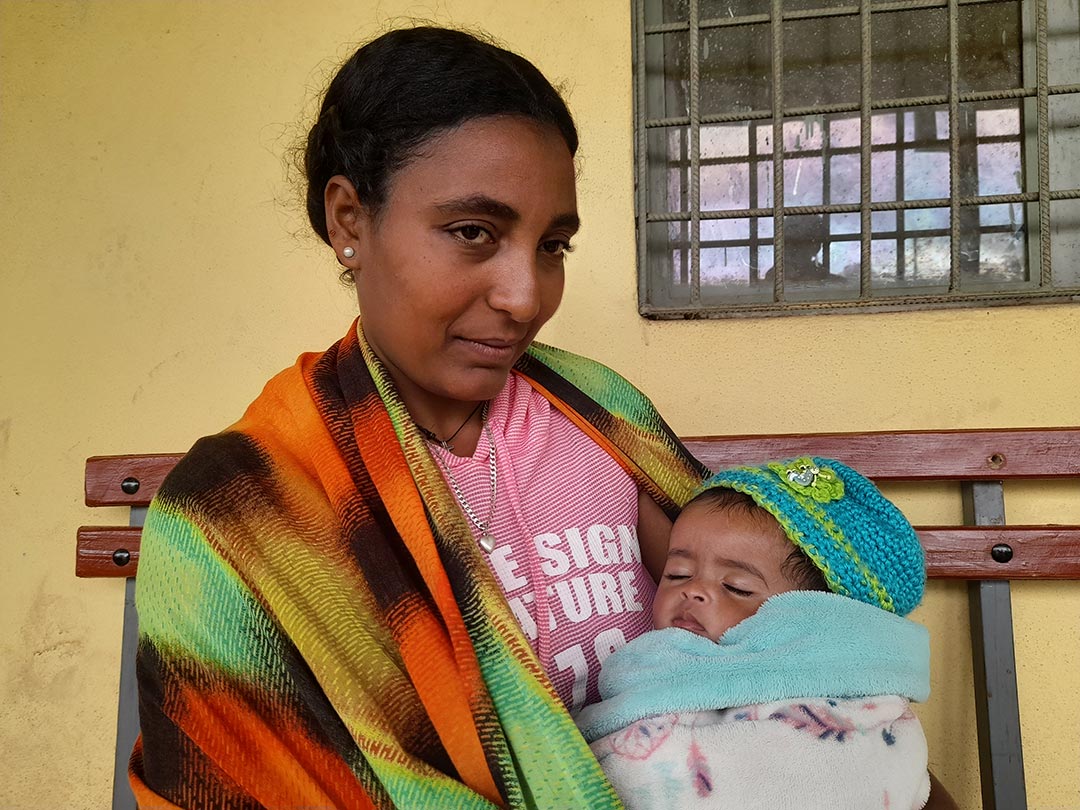
Credit: Solomon Yimer
As a care mother, she frequently brings children from the orphanage to the health centre to get them regular vaccinations. Sintayehu often experienced long queues, which prevented her from getting back early and bringing other children who were scheduled for vaccination on the same day.
“I take care of six children from one to nine months old. Sometimes more than one child will be scheduled for vaccination on one day. When this happens, I should be able to make two round trips to get the children vaccinated. Even though the health workers would usually allow us to get the service without waiting, it wasn’t always the case,” she says.
Have you read?
Sintayehu is, therefore, happy to see that the immunisation service has improved in terms of vaccination service delivery and quality.
Remembering the hospital’s situation before, Amsalu Wudneh, Head of Injibara Health Centre, says the very narrow room that was uncomfortable for the mothers and children also made it difficult for health workers to give quality vaccine service.
“As it is the only immunisation centre in the town, which resulted in a large number of clients seeking vaccination, we were unable to satisfy all of our clients,” says Wudneh. “Most parents were forced to wait for hours and sometimes mothers left the centre without getting their children vaccinated.”
Despite strong immunisation awareness in the community, there were children being missed or not getting fully immunised due to the poor facilities.
As a result of multiple client complaints, the management of the health centre have decided to make renovations to the vaccination room to improve immunisation services.
“We now see how the longer wait times and unhygienic and uncomfortable vaccination rooms caused some of the dropouts,” says Amsalu. “We not only made the environment attractive but also regularly disinfect the room and keep the area clean to keep children safe from infections,” he explains.
He goes on to say, “We have seen the numbers of children brought for vaccination increase. We are very happy that our efforts have brought about such a change; it really means a lot.”
Ahmed Hussein, head of Awi Zone Health Office, says that extensive work is being done to improve the experience in all health centres by improving vaccination rooms and, by extension, providing better immunisation services to the communities.
“Though the vaccination coverage at a zonal level is reasonably encouraging, there was a need to make the immunisation rooms more comfortable for children and parents,” he explains.
According to Ahmed, 27 of the 48 health centres in Awi zone have already re-established a separate and comfortable immunisation room, and most of the health centres are working to be more child-friendly.
He also believes that the improvement on immunisation facilities will help boost vaccine coverage, reduce the rate of dropouts, and encourage other health centres to find ways of shortening waiting times.
